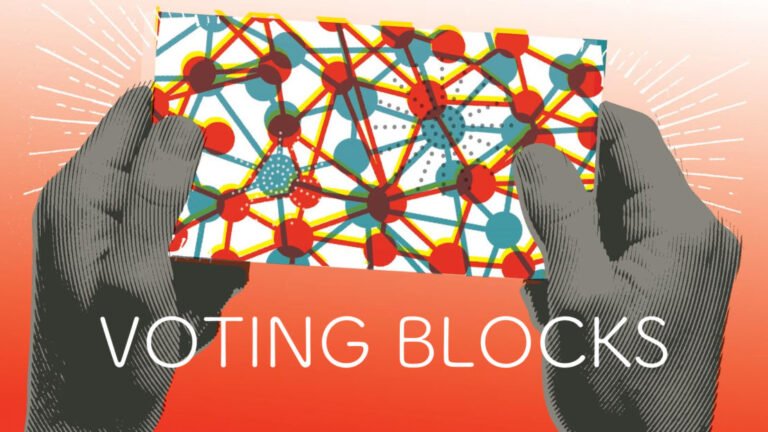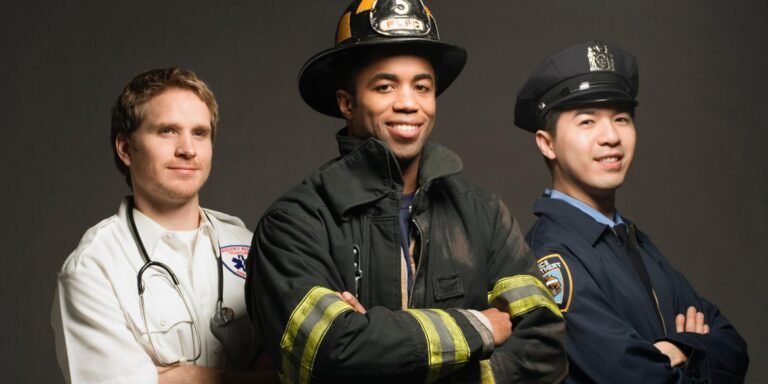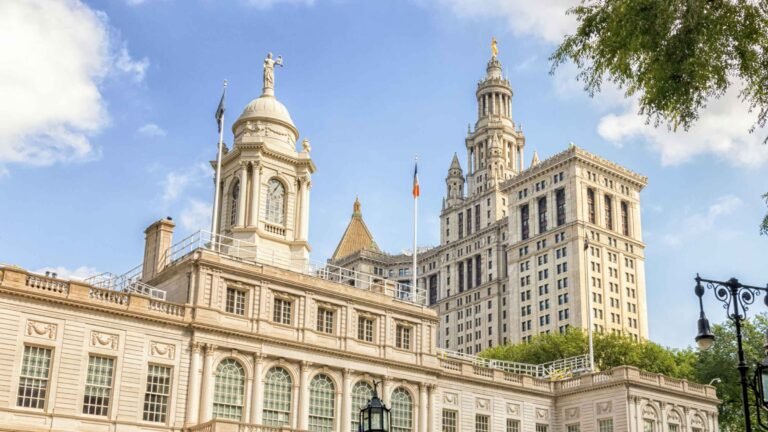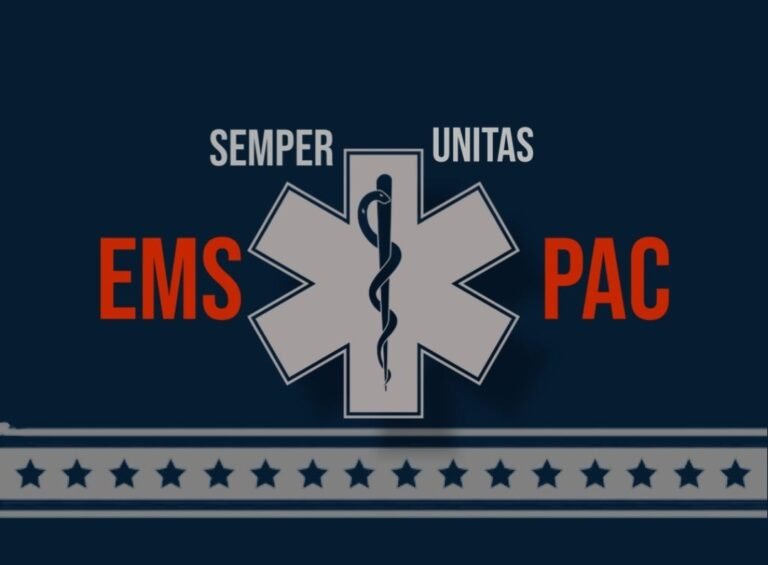
EMERGENCY MEDICAL SERVICES PUBLIC ADVOCACY COUNCIL &
EMERGENCY MEDICAL SERVICES POLITICAL ACTION COMMITTEE (EMSPAC)
NYC EMS SUPPORT PROGRAM
Submitted by:
David Besprozvany, President of EMS Political Action Committee
Walter S. Adler, Chief Advocacy Officer of EMS Public Advocacy Council
Contact@emspac.org
347.417.0060
January 31, 2025
TABLE OF CONTENTS
Page
Executive Summary
Identification of Key Stakeholders
- Emergency Medical Services Public Advocacy Council (EMSPAC)
- Regional Emergency Medical Services Council (REMSCO)
- EMS Fire Department of New York (FDNY) Help Fund
- FDNY Counseling Service Unit (CSU)
- Local 2507 & Local 3621
- 1199SEIU
- IAEP Local 220, Local 713, Local 707, & Local 22
- Academic Institutions in the New York Region
- Governmental Agencies
Program Components
- Crisis Hotline
- Dedicated Social Workers
- EMS Peer Support
- Monthly Debriefing & Support Groups
Program Implementation Timeline
- Pre-Launch Planning (January 1, 2025 – June 30, 2025)
- Program Launch (July 1, 2025)
- Year One Assessment and Evaluation (July 1, 2025 – October 31, 2026)
Monitoring, Evaluating, & Reporting
Budget Breakdown per Annum
Line Item Annual Budget Projection per Annum
3-Year Projected Costs
Conclusion
NYC EMS WELLNESS & PEER SUPPORT PROGRAM
Proposed 3-Year Pilot
Submitted By: Walter Adler and David Besprozvany on behalf of EMSPAC.
Executive Summary
New York City’s EMS workforce is approximately 15,500 strong, working or volunteering across municipal, hospital-based, private, and volunteer sectors. These professionals routinely face high-stress and traumatic situations, yet existing mental health resources are siloed, often difficult to navigate, and stigmatized. EMS professionals are not good at seeking out help for their stress and exposure to death, sickness, and trauma. The inadequacy of prior and existing initiatives results from agency/sector division, refusal to share information, poor follow-up, and the stigma of use.
This three-year pilot program seeks funding from the City of New York to create a comprehensive EMS-specific wellness and peer support system. Key components include:
- A 24/7 crisis line dedicated to EMS personnel, able to provide immediate referrals or engage resources (e.g., B-HEARD teams).
- Dedicated social workers to manage professional referrals and conduct follow-ups.
- An all-sector EMS Peer Support Program (e.g. “Medic-to-Medic”)
- Monthly crisis debriefing and support groups, meeting in accessible, borough-wide spaces.
Total Estimated Cost:
- Year One: $280,000–$285,000
- Year Two: $280,000–$285,000
- Year Three: $280,000–$285,000
Total 3-Year Cost: Approximately $840,000–$855,000
We seek funding from the City of New York for various measures to support EMS wellness, health, and safety. This pilot program proposes an all-EMS peer support service, monthly debriefing groups, and a dedicated hotline to activate EMS-specific resources.
The development of this program is ongoing and subject to change.
Identification of Key Stakeholders
We anticipate that several community-based, municipal, private, academic, and governmental players may seek involvement in this program.
- Emergency Medical Services Public Action Committee (EMSPAC)
The EMS Public Advocacy Council (EMSPAC) is a nonprofit dedicated to advancing the welfare of EMS professionals across the country. EMSPAC can act as a primary outreach resource to all sectors under its 501(c)(3) status.
- Regional Emergency Medical Services Council (REMSCO)
REMSCO can act as a facilitator and program administrator under its 501(c)(3) status.
- EMS Fire Department of New York (FDNY) Help Fund
The EMS FDNY Help Fund can act as a municipal sector resource under its 501(c)(3) status.
- FDNY Counseling Service Unit (CSU)
The FDNY CSU can act as a municipal sector resource.
- Local 2507 and Local 3621
Local 2507 and Local 3621 can act as municipal sector referral resources.
- 1199SEIU
Local 1199SEIU can act as a hospital-based sector referral resource.
- IAEP Local 220, Local 713, Local 707, and Local 22
IAEP Local 220, Local 713, Local 741, Local 707, and Local 22 can act as private-sector referral resources.
- Academic Institutions in the New York Region
Local social work and psychology programs in the New York area can lend qualified students and faculty to assist with case management and administrative tasks. (e.g. CUNY, SUNY, NYU, Columbia University, etc.)
IX. Governmental Agencies
City, state, and federal public health and mental hygiene programs can participate in a variety of capacities.
Program Components
- Crisis Hotline
- Dedicated phone line for EMS professionals in distress or seeking resources.
- Potential to activate B-HEARD units or 911 if a caller needs immediate assistance.
- Dedicated Social Workers
- EMS Peer Support
Peer Support is not only about crisis; it should be about the promotion of wellness where one is employed and encouraging one’s co-workers to engage in resources when needed. Stakeholders should be compelled to participate if they employ EMS workers or represent them as union, or professional associations. Each stakeholder will be responsible for enlisting a certain number of EMS Peer Mentors into the available pool.
This program will enable the training, deployment, and fair compensation of EMS who seek to participate as active Peer Mentors. This will involve not only their training but also their deployment when needed, the follow-up by social workers of their contacts, and ongoing support relationships that are wholly time-consuming and that volunteers can adequately accommodate.
Providing grant funds/stipends for several hundred trained EMS-certified as EMS Peer Support Mentors ensures a maximum diversity of talent and distribution. Certified EMS Peer Support Mentors will be in a pool of resources available to lock into the hardship cases of their peers with greater availability and commitment to follow-up. These EMS Peer Support Mentors will receive standardized training in critical incident stress debriefing and be paid hourly for their documented contacts/ support work. The recommended credential at this time is Mental Health Resilience Officer (available as an online class), REMSCO’s existing Critical Incident Stress Management course (16 hours Zoom, 8 hours person), and a crisis scenario-driven skills practical examination we seek to see Peer Mentors show they can engage with empathy and good judgment. We seek to combine elements of the NAEMT MHRO with what REMSCOs previously offered in CISM training. This will be integrated with what the FDNY CSU uses to train its existing peer mentors.
- REMSCO can be asked to supervise the training standards and disperse any funding.
- FDNY CSU and REMSCO can be asked to standardize their peer support training and establish an MoU on collaboration.
- Unions that represent EMS include 2507, 3621, 1199, IAEP, 707, 713, 741, 22, and CSEA; all can be asked to be stakeholders.
- Stakeholders can be incentivized to participate by being able to access an internal grant of program support funds from REMSCO; the primary program administrator.
- Agencies and Unions can be asked to mobilize a number of their EMS members into the program at a ratio of 50 EMS employees to 1 Peer mentor, but ideally at least 1 per base/ station of which there are around 150 in NYC.
- Hatzalah and NYSVARA can be asked to participate
- EMSPAC can aid in program administration and supervisory responsibilities
- Stakeholders can support the promotion and outreach needs
- An EMS PEER SUPPORT General Coordination Committee can administer the program with one representative per agency, union, VAC, or EMS association that participates.
Due to the difficult environments EMS personnel encounter every day, and the impact of both direct and vicarious trauma, the EMS workforce has long faced a disproportionate challenge in maintaining their mental health resilience.
This unique NAEMT course was developed to assist EMS agencies in building and supporting the mental health resilience of their personnel, including leadership, EMTs, paramedics, dispatchers, fleet mechanics, and all others whose mental health is impacted in their daily work.
The Mental Health Resilience Officer (MHRO) course prepares EMS personnel to serve as their agency’s Mental Health Resilience Officer. In this role, the MHRO will engage with peers to develop an understanding of mental health issues and resilience, identify peers who are experiencing mental health stressors and crises, learn de-escalation techniques, navigate peers in need to the right services for help, and support the development of a culture of mental health resilience and emotional wellness within the agency.
The course will explore:
- The Role of a Mental Health Resilience Officer
- The impacts of EMS work on mental health and emotional well-being
- How to identify the different elements of the stress continuum and associated behaviors
- Mental health resilience at the individual, interpersonal, and agency level
- Communication strategies to engage colleagues on mental health issues
- Case studies in EMS mental health
- Key elements of an effective agency EMS mental health resilience program
- How to build or strengthen an agency mental health resilience program
- Resources to support the MHRO, including a private digital EMS discussion group monitored by licensed therapists
In addition, the digital student resource guide is included in this package to provide learners with downloadable resources that recap key course content, expand on foundations of building and maintaining resilience, and instruct peers on basic resilience and wellness concepts.
The online MHRO course allows users to earn 6 hours of CAPCE-approved continuing education. Upon successful completion of the course, NAEMT will issue a certificate of completion.
This course is designed for EMS practitioners who meet the following qualifications:
- At a minimum, current state certification or license as an EMT
- At least three years of full-time practice (or equivalent) at the EMT level or above
- Strong interpersonal communication skills with an interest in serving in this position
- Prior experience with critical incident stress debriefing (CISD) and/or motivational interviewing is preferred.
IV. Monthly Debriefing & Support Groups
It is often very hard for EMS members of service to ask for help despite the many resources that exist to support us. Therapy is highly stigmatized. The FDNY CSU is often associated with one’s personnel file and prioritizes firefighters. There is no uniform all-EMS mutual aid and mental health support system. RESMCO Peer support is underutilized and underfunded. No EMS actors are sharing information in assaults, crashes, hardships, or suicides across agencies or sectors. As a result, EMS members continue to perish.
We are often not aware of our own situation. We are very resilient until we are not. We have logged approximately one EMS suicide per month since 2020. Accompanied a high level of self-destructive behavior and self-harm.
EMSPAC seeks to launch “debriefing and support groups” in order to give our EMS brothers and sisters the opportunity to discuss the concerns and challenges that arise while supporting others during their hardest times. It will combine topic-based discussion on job issues, confidential check-ins, and real-talk peer mentorship by active duty EMS on the job.
The vision is to be able to combine relevant mutual aid and debriefing with referrals to licensed mental health professionals who understand the world of EMS.
The debriefing and support groups will meet monthly with at least one dedicated location at a dedicated time each month to discuss the difficult realities of EMS work in NYC. They will be facilitated by active-duty EMS and have 3 components:
- General Briefing/Check-in on difficult jobs; going around the circle to unpack and debrief on some hard calls they experienced that month.
- The Topic of the Month; EMS personnel will also be able to discuss a spontaneous topic of their choice, though a topic will be pre-set for the group allowing the group to move smoothly should there not be anyone who wants to start and share.
- 1-to-1 debriefing on the challenges the members are facing; group partners off and have a short real talk about things happening on and off the job with a stranger.
- Additional Resources a check-in time after the meeting is available for EMS MOS seeking help connecting with professional therapists, wellness support, dieticians, or any EMS resources off our vetted resource link tree.
The groups will be completely confidential. A disclaimer should be made that if anyone is struggling, after the meeting we can meet with them further to get them “additional resources”, i.e. professional referrals to clinical/ wellness help.
Support groups will meet on a set calendar date each month at the same location with the possibility of adding additional groups and gatherings. The group will use a circle or open circle format when possible to create a community. The groups will be held regardless of the number of people who attend to keep continuity and be able to support all of the students.
The groups will be led by experienced 911 EMS partnered with mental health professionals and will be facilitated by either a REMSCO Peer Mentor or a CSU-trained EMS professional.
These meetings should be 1 hour in duration. The facilitators will welcome the group, set the norms and disclaimers, and use a guiding topic if the group does not volunteer a topic for discussion. They will engage in any 1:1 interactions if needed and then close the discussion. If the members are seeking some specific individual resources the facilitators will provide referral suggestions.
Program Implementation Timeline
- Pre-Launch Planning (Jan 1 – June 30, 2025)
- Finalize partnerships, secure funding, and hire part-time staff.
- Begin scheduling training cohorts and designing outreach materials.
- Program Launch (July 1, 2025)
- Crisis line operational.
- First peer mentor cohort trained and ready for referral.
- Scheduling of monthly debriefing groups in each borough.
- Year One Assessment & Evaluation (July 1 – Oct 31, 2026)
- Data collection on utilization, peer contacts, and crisis interventions.
- Stakeholder meetings for feedback.
- Identify areas for expansion or cost reallocation in Years Two and Three.
Monitoring, Evaluating, & Reporting
- Data Collection & Confidentiality: Stakeholders will submit de-identified reports of peer support interactions to REMSCO for aggregated tracking.
- Surveys & Feedback: Anonymous surveys will gauge participant satisfaction, awareness of services, and perceived effectiveness.
- Annual Report: REMSCO, in collaboration with EMSPAC, FDNY CSU, and union partners, will compile a report on utilization rates, cost-effectiveness, and recommendations for the following year.
Budget Breakdown
- Dedicated Social Workers for Referrals
- $100,000 total (2 part-time @ $40,000 each)
- Rationale: In NYC, a part-time licensed social worker (LMSW or LCSW) with relevant mental health/crisis experience would likely require $45,000–$50,000 each for 20 hours/week. This ensures competitive pay and continuity of service.
- $100,000 total (2 part-time @ $40,000 each)
- Part-Time Program Coordinator
- $55,000
- Rationale: Coordinating multiple unions, agencies, training sessions, and case tracking in NYC often requires a more competitive salary or stipend, plus partial fringe benefits or an offset for health coverage.
- $55,000
- Dedicated EMS Help Hotline
- $20,000
- Rationale: A 24/7 hotline, even if subcontracted or using existing infrastructure, may need additional funds for technology support, liability coverage, training, and supervision to maintain confidentiality and 24/7 staffing.
- $20,000
- Peer Support Training (Certification and Materials)
- $25,000
- Rationale: Each MHRO course is $99 per participant. Adding instructor fees, in-person skill sessions, scenario-based training materials, and potential travel/venue costs often exceeds the original estimate. An additional $5,000 helps cover printing, instructor stipends, or Zoom licensing fees for remote sessions.
- $25,000
- Peer Support Stipends
- $60,000
- Rationale: Compensating certified EMS peer mentors at a rate that matches (or slightly exceeds) the average EMS wage is crucial to incentivize consistent engagement. A modest increase ensures that more peer mentors can be activated, especially in high-demand months.
- $60,000
- Printed Materials for Outreach
- $3,500 – $5,000
- Rationale: Outreach to 15,500 EMS providers citywide requires multi-lingual and sector-specific printing. This range covers additional design or shipping costs for posters, flyers, table-top displays, and informational brochures.
- $3,500 – $5,000
- Debriefing Spaces (Refreshments & Supplies)
- $5,000
- Rationale: While many agencies (FDNY, HHC, CUNY) can offer no-cost meeting rooms, budgeting for coffee, light refreshments, printed sign-in sheets, and small venue fees (when needed) should be higher to accommodate monthly meetings in all five boroughs.
- $5,000
Line Item Annual Budget Projection per Annum
| Line Item | Original | Revised |
| Dedicated Social Workers | $80,000 | $100,000 |
| Part-Time Program Coordinator | $45,000 | $55,000 (pitched as fully remote or partially remote position) – are they contracted, are they contracted for full years, are they city employees etc. Finding out from Sherry (NJ) finding out what services. LCSW’s perspective. Once we have better idea of the budget is to identify the potential stakeholders for such a program. FDNY, REMSCO, VOLUNTARY HOSPITALS (could offer space) they might have people. School of social work at Columbia/NYU/CUNY – stakeholder summit. This is what we could do. Identifying stakeholders could lower costs. Important for the budget to reflect the level of service you want to offer. |
| Dedicated EMS Help Hotline | $15,000 | $20,000 |
| Peer Support Training | $20,000 | $25,000 |
| Peer Support Stipends | $50,000 | $60,000 |
| Printed Materials | $2,500 | $3,500–$5,000 |
| Debriefing Spaces & Refreshments | $3,000 | $5,000 Data Collection – need to allocate money for that. In this space in Data collection/analysis – you might be planting the flag if nobody is doing this at scale. – Tracking how many people utilize the service survey. In the beginning of EMS – how many calls? That determined the need and that determined the budget. How many people utilize the service every day week, and how do they use it. When you write the definition – you write the control over this. Tech support is expensive. Insurance – Legal Counsel – Malpractice Insurance People are going to ask you how you determine success – how do you characterize a successful program. |
| Subtotal | $215,500 | ~$268,500–$270,000 |
| Potential Administrative/Contingency | — | $10,000–$15,000 |
| Estimated Total Per Year | $215,000 | $280,000–$285,000 |
Note: The “Original Total” slightly exceeds $215,000 when you add the line items (it comes to $215,500), suggesting a rounding issue. The revised budget accounts for realistic salary scales, overhead, and program expansion needs, totaling approximately $280,000–$285,000 per year.
3-Year Projected Costs
3-Year Projected Costs
- Year One: $280,000–$285,000
- Year Two: $280,000–$285,000
- Year Three: $280,000–$285,000
Total 3-Year Cost: Approximately $840,000–$855,000
(If funding must remain closer to the original $639,000 total, the program may need to reduce the scope of services, the number of peer mentors, or shift some costs to volunteer or donated services.)
Conclusion
This pilot program addresses a critical gap in mental health and peer support for New York City’s EMS professionals. By appropriately funding dedicated social workers, a well-publicized crisis hotline, peer mentor training, monthly debriefings, and ongoing evaluations, we can foster a culture of resilience and wellness across all EMS agencies and unions.
We respectfully request funding at the revised level of approximately $280,000–$285,000 per year to ensure a robust and sustainable pilot that effectively serves our 15,500 EMTs, paramedics, and volunteers.
Thank you for your consideration. We welcome any opportunities to further discuss and refine this proposal to meet the City’s budgetary requirements while maintaining the integrity and efficacy of the program.



